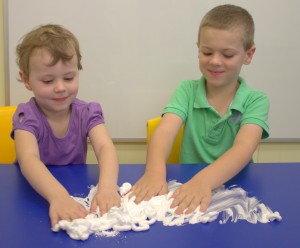 At school we are taught about our five senses, but there are many more than that. Some kids have difficulty interpreting information from their senses and this effects their learning, development and behaviour. Let's look at our senses and how they affect kids when there are sensory issues.
At school we are taught about our five senses, but there are many more than that. Some kids have difficulty interpreting information from their senses and this effects their learning, development and behaviour. Let's look at our senses and how they affect kids when there are sensory issues.
There is some argument about the exact number, but nine seems to be reasonable to describe the most important senses, as it includes the five well known ones of vision, hearing, smell, taste, and touch. We can add to that pain and temperature as well as movement based senses, vestibular (our sense of balance) and proprioception (our sense of our body in space).
So our nine main senses are:
- Vision
- Hearing
- Smell
- Taste
- Touch
- Balance
- Proprioception (body awareness)
- Temperature
- Pain
All our senses are important for us to understand and interact with the world around us. Some children find it challenging to process and understand information from their senses and this can impact on their learning, development and behaviour. Next week we will look at sensory processing disorder.
Let's look at each of our senses:
1. Vision
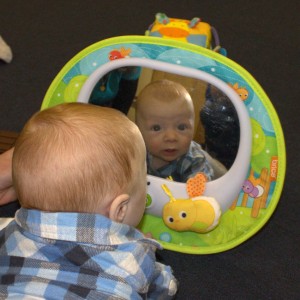 Vision is the ability to make use of what is seen through our eyes. Receptors in the retina at the back of the eye detect changes in light. This gives us information about edges, lines, colour, movement, depth, shape, size, and space between objects and people. However, it is not just seeing but remembering, organising, recognizing and using visual information. There are many different visual perceptual skills, these include:
Vision is the ability to make use of what is seen through our eyes. Receptors in the retina at the back of the eye detect changes in light. This gives us information about edges, lines, colour, movement, depth, shape, size, and space between objects and people. However, it is not just seeing but remembering, organising, recognizing and using visual information. There are many different visual perceptual skills, these include:
- Visual discrimination: the ability to discriminate dominant features of objects.
- Visual memory: the ability to recognise something when it reappears.
- Visual spatial relationships: the ability to perceive the position of objects.
- Form constancy: the ability to categorise similar objects with different features.
- Sequential memory: the ability to recognise a sequence of objects when they reappear.
- Visual figure ground: the ability to identify an object from surrounding objects.
- Visual closure: the ability to identify a whole figure when only parts are shown.
Common examples of how poor visual perceptual skills impact on children include: difficulties with reading, writing, memory, visual attention, checking schoolwork, response to the proximity of others, and safe movement in the environment.
 2. Hearing
2. Hearing
Hearing is the sense that involves our detection of sound. When we hear a sound the sound waves cause the ear drum to vibrate and this movement is passed on by a series of tiny bones to the cochlear. Within the cochlear the movement is changed to a message which can be passed along nerves to our brain. In brain these messages are interpreted as sound.
Processing of sounds involves four parts.
- Awareness of the presence and location of sound.
- Discrimination of the sound from others comparing differences in rate, intensity, duration and pitch.
- Identification, including attributing a meaning and monitoring the sound.
- Ongoing comprehension including remembering and re-using the sound.
In a normally functioning auditory system, the ear will protect itself from loud noises by contracting the muscles of the ear to let more or less sound in. In an auditory system that is not working properly, the child may under-respond and miss sounds or over-respond and become anxious in the presence of sounds.
Children who have trouble hearing or processing sound may have a range of learning, language, communication and social challenges.
3. Smell
The awareness of smells, or olfactory input, involves the detection and interpretation of chemicals odours in the air by sensors in our nose. Our sense of smell is one of our strongest senses, it affects our ability to concentrate and our activity level. Smell tells us about how safe, pleasant or unpleasant things are in our environment, which is why children tend to respond emotionally to smells.
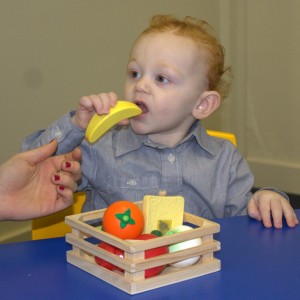 Children who demonstrate olfactory sensitivity may feel nauseous in response to smell, refuse foods with certain smells, or may be easily irritated by people’s perfumes. Children who are olfactory seeking may routinely sniff their food before eating or attempt to eat non-food objects with particular smells.
Children who demonstrate olfactory sensitivity may feel nauseous in response to smell, refuse foods with certain smells, or may be easily irritated by people’s perfumes. Children who are olfactory seeking may routinely sniff their food before eating or attempt to eat non-food objects with particular smells.
4. Taste
Taste is the sensory perception of food or other things on our tongue. Taste occurs when a substance in the mouth reacts chemically with receptors on our taste buds. Taste works closely with sensors of smell, texture and temperature to help us make choices about foods. There are five basic tastes: sweetness, sourness, saltiness, bitterness, and umami (like Vegemite).
Children who are over sensitive to taste may avoid certain foods while other children may be under-sensitive and eat, lick or taste inappropriate things.
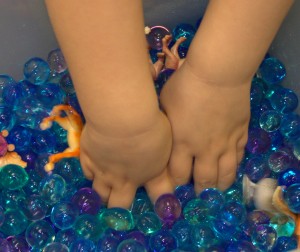 5. Touch
5. Touch
Our sense of touch allows us to gain information through different receptors in our skin. The ability to interpret touch information is important to our safety as it can alert us when something is unpleasant or dangerous. Touch can be in form of light touch, deep pressure, skin stretch, vibration, movement, itch, temperature and pain.
Children who are over sensitive to touch can find some sensations unpleasant or distracting, while children who are under sensitive may seek out touch experiences.
6. Balance
The vestibular sense, which is input from the inner ear, is our centre for balance. It detects our head position and body movements including up/down, back/forth, and side to side movements. It also provides information about whether we are moving fast, slowly or standing still, and whether objects are moving or still in relation to our body.
If this sensory system is under sensitive to sensory input it can alter the way we understand our body position and lead us to seek extra vestibular input to help us feel regulated (calm and comfortable).
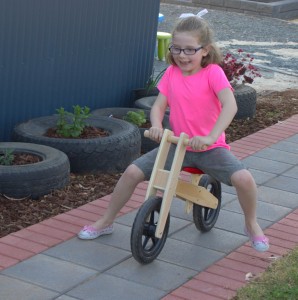 7. Proprioception
7. Proprioception
Proprioception is a person's awareness of their own body in space. This sense allows us to keep track of where our body parts are without having to look at them. While you are sitting and reading this you can reach down and scratch your knee under the table because your body knows where both your knee and your hand are without having to look at them. Without this sense this simple action would be much more difficult.
Proprioception works through an awareness of how our muscles are stretching and adjusts the contraction of our muscles as needed. It works with "kinesthesia" a sense that tells us how our joints are moving and the "vestibular system" in our inner ear which tells us about balance and gravity. All these help us to make adjustments in our joints and muscles to help us move our body and keep our balance. It sounds complex yet we do it all the time without even being aware of it.
8. Temperature
Like touch, temperature is perceived through sensors in our skin. It has a function in keeping us safe.
Children who do not accurately perceive temperature may not dress appropriately for the weather and may show unsafe behaviours such as touching hot surfaces. Children who are over sensitive may be fussy or upset by the temperature of foods, drinks and other things such as air conditioning or bath water.
9. Pain
Like temperature, pain also has a function in keeping us safe. Some children over react to pain, while others under react to the point that it is hard to tell if they are hurt or unwell.
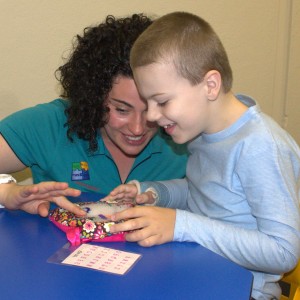 Some children have difficulty processing the information from their senses. They may be under-sensitive and seek out extra stimulation or over-sensitive and avoid stimulation. Often children will over react to some senses and under react to others. This is called sensory processing disorder and we will look at this in our next post.
Some children have difficulty processing the information from their senses. They may be under-sensitive and seek out extra stimulation or over-sensitive and avoid stimulation. Often children will over react to some senses and under react to others. This is called sensory processing disorder and we will look at this in our next post.
Children who have autism, developmental delays or learning problems may have difficulties with their senses which can have an impact on other areas of their development.
If children have difficulty processing sensory information occupational therapists can help by assessing children's sensory processing and providing ideas and activities to help regulate a child's sensory system.
If you are concerned about your child's sensory processing skills an occupational therapist is the person to see for advice. Occupational therapist can assess your child's skills and advise you on what to do to help your child's development. For more information about occupational therapy at Talking Matters check Our website.
If you would like an occupational therapy assessment read more here or contact us to book an appointment.
Related Blog Posts
If you liked this post you may also like:
Playing together
Dressing Skills
Tips for Designing Calming Spaces for Kids
Developing pre-writing skills



